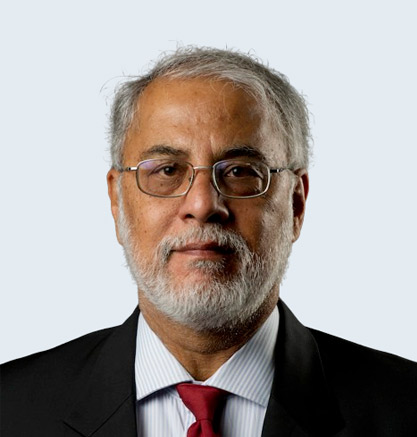-
CENTRES
Progammes & Centres
Location
India can’t escape from the systematic challenge of large-scale reforms

Trade equals prosperity, this is the simple lesson delivered at the inaugural Asia Economic Dialogue in Pune over the last weekend whose theme was Asia and the Emerging International Trading System. The conference, run in partnership between the Ministry of External Affairs and the Pune International Centre, is an effort by the government to go beyond the narrow confines of the New Delhi on such issues.
The tone was set by Kishore Mahbubani, an academic and former diplomat from Singapore, who bluntly argued in his special address that not only was trade a major factor in enriching the world, but was also responsible for the large-scale elimination of poverty that we have seen in the opening decades of this century. Take the experience of the two Koreas. The South Korean GDP was twice that of the North in 1980, but by 2000, it had become 20 times larger. The GDP of India and China was roughly the same in 1980, but in 2018, the latter was five times higher, even though India actually had more trade than China in 1980.
Thailand had never been a colony, had not experienced war and its GDP in 1990 was 14 times that of Vietnam, which had known nothing but war for the previous half century. But by 2018, it had used trade to reach a point where the Thai GDP was only twice as large as that of Vietnam. Trade was not just about trade, but a matrix of economics, poverty, geopolitics, peace and cultural confidence.
Mahbubani’s bottom line was that India with its huge pool of managerial talent (more visible abroad than in India), its strong government and its geopolitical sweet spot vis-à-vis the US, was well positioned to move fast on the growth track.
But things are no longer simple. Unlike China, which got a huge free ride with the US, India has come into the limelight just when the US President believes that trade is bad, and trade deficits worse. The record shows that far from giving concessions to this huge and poor country, the US is trying to extract them from India.
Other presentations at the meeting brought out that while the opportunities existed, there were many factors that were hindering India’s ability to exploit the situation. As a senior government economic adviser pointed out, the issue was not just the US, but internal issues that were pulling India back. India’s share of manufacturing had been flat for several years. India needed to do things in terms of better infrastructure, roads, taxation regime, availability of credit and so on to be able to exploit its sweet spot.
India’s poor performance was underscored by the fact that of the $300 billion plus of apparel export trade, India’s share is just $15 billion as compared to $36 billion from Bangladesh. Another expert pointed out that in terms of economic growth and quality of life, Bangladesh was doing far better than India at present.
In his presentation, former World Bank economist Jayanta Roy pointed out that India has always been the hesitant globaliser in pursuing trade reform. To emerge as a global hub, India needs to make its industry competitive, bring down tariffs, and build upon steps it has taken on the ease of doing business and improving its logistics performance. It needed to move away from protectionism and pursue the reform of multilateralism.
The main thrust of his remarks was on the importance of getting small and medium enterprises to participate in global value chains, something that India had failed to do because of its poor understanding of how these work. In fact, the key to increasing India’s stagnant manufacturing exports is to integrate manufacturing into global production networks.
As it is, things are getting complicated here, with the West seeking to close the door for developing countries that want to replicate the success of China. The US steps, which have led to the appellate body of the World Trade Organisation (WTO) coming to a grinding halt, are only part of a series of measures aimed at not only containing China, but also countries like India, Brazil, Indonesia and South Africa.
There does not seem to be much of a meeting ground between the developed and developing countries. The latter want to preserve and refine the core values of the WTO that led to huge prosperity across the world. Among these are the special and differential treatment of developing countries. Among the noted specialists who spoke were trade consultant Harsha V Singh, JS Deepak, India’s ambassador to the WTO, and his Chinese counterpart Zhang Xiangchen.
As the other sessions of the conference indicated, there is no shortage of ideas on ways India can move ahead and, indeed, ‘pole-vault’ into the ranks of leading nations. But the bottom line remains that India cannot escape from the systematic challenge of large-scale reforms in investment policy, labour, tariff and non-tariff measures, connectivity, and above all, on the need to promote political stability.
This commentary originally appeared in The Tribune.
The views expressed above belong to the author(s). ORF research and analyses now available on Telegram! Click here to access our curated content — blogs, longforms and interviews.

Manoj Joshi is a Distinguished Fellow at the ORF. He has been a journalist specialising on national and international politics and is a commentator and ...
Read More +